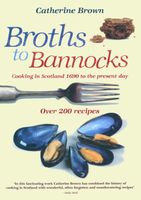Advertisement
Oatmeal
Appears in
Published 1990
Thick or thin, knotty or smooth, the critical factor in brose is the quality of the oatmeal. A slow-ripening grain, peculiarly suitable to cool Scottish summers, good oatmeal has an attractive sweetish nuttiness. To the connoisseur there is a vast difference between slow-ripened Scottish oatmeal, kiln dried and ground in the traditional way between millstones, and fast-ripened, mechanically dried, roller-milled meal.
Much of the flavour of the oatmeal depends on the slow gentle warmth of the kiln drying, the nature of the fire – as with whisky – giving character to the grain. There are a number of revived and original mills in Scotland today producing kiln-dried and stoneground oatmeal. Though turning the grain involves more physical effort and skill, there is no doubt that good kiln-dried meal is far superior to meal dried by any other method. These traditional millers, though a minority, keep alive the taste and flavour of oatmeal as it used to be.

